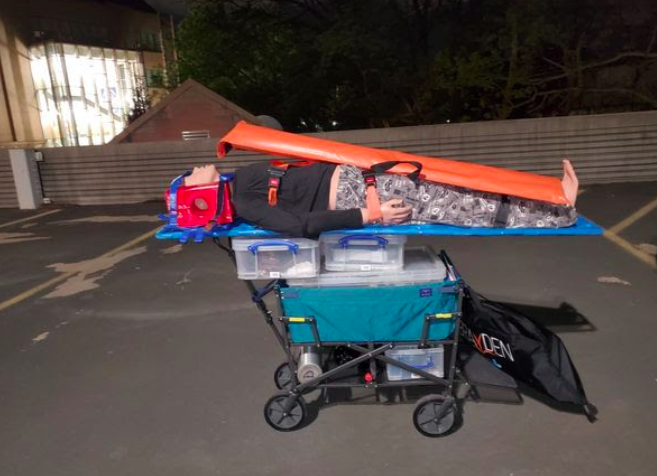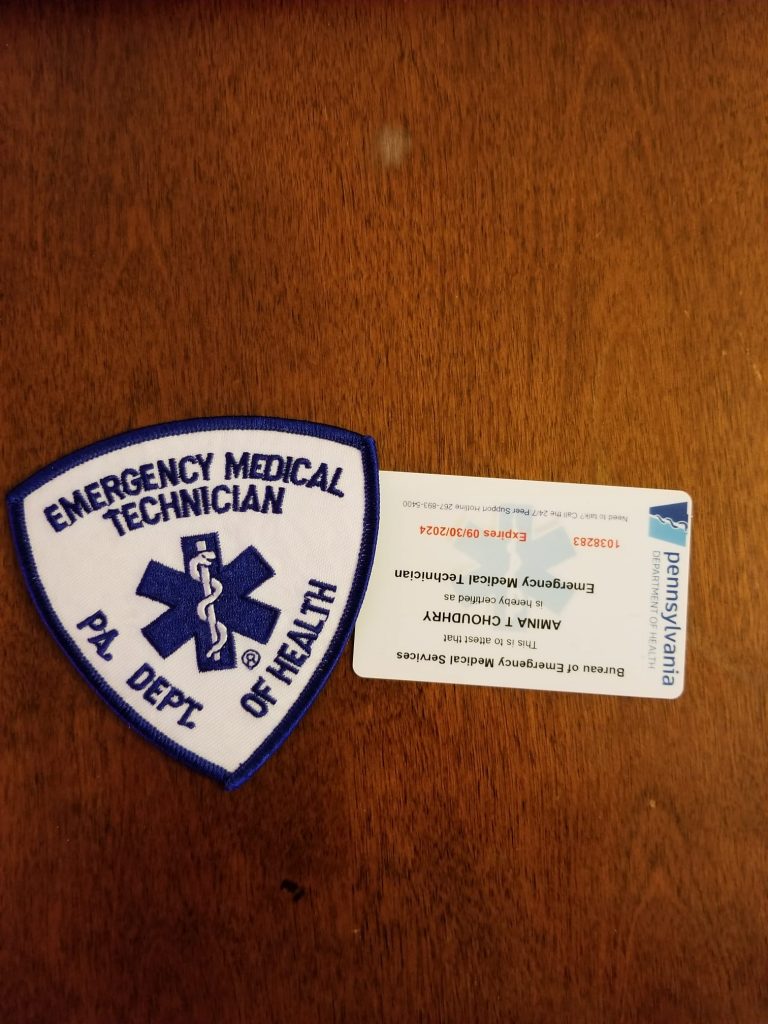Hey Ya’ll and welcome back to Amina’s FLI experience, a blog dedicated to detailing the life of a First-Generation Low Income Pre-med student at Bryn Mawr.
This week I’m going to talk about something I’m very passionate about and that is decarceration. I am currently involved with 3 local organizations tasked with decarceration and harm reduction that I wanted to share with ya’ll.
- BICO ignite Collective
- First up, we have Bico Ignite collective a Bryn Mawr/Haverford college club and revolutionary organization created with the ethos of art and non-violent direct action as a means of resistance. Our mission is to Educate. Organize. Act. Disrupt. We are a socialist club that works on zines, political education, public pressure campaigns, and other actions! Join our Instagram @bicoignite If you are interested in attending any meetings.
- Philadelphia Harm Reduction Coalition
- Next up we have Philadelphia Harm Reduction Coalition, a grassroots organization to support victims of the Opioid Epidemic. I have personally participated in Naloxone Distribution Program working to resource Narcan to local organizations and prisons in PA and find the work to be rewarding and impactful.
- Decarcerate PA
- And finally we have Decarcerate PA, a nationwide organization seeking an end to mass incarceration. I have worked on numerous projects aimed at reallocating resources to restorative justice programs focusing on harm reduction by signing petitions, holding rallies, drafting proposals, calling local representatives & raising funds for mutual aid bail bonds.
This blog post is going to be a bit different than my previous posts in that I’m going to be sharing an op-ed piece with the goal of political action to support decarceration and abolition. Instead of framing decarceration and prison abolition in a human rights violation lens, I’m going to be talking about the relationship between detention centers and infectious diseases, particularly referencing the rising epidemic of multidrug-resistant (MDR) tuberculosis in Russia as it’s being fueled in part by infection among inmates in Russian prisons, and by what public health experts are calling a major bottleneck of second-line anti-tuberculosis drugs.
Now we already know, because the data has told us so, but it’s important to remember that incarceration patterns do not track alongside crime rates so much as they track alongside other transformations in social, economic and political life.
This includes
- inequality rates
- cuts to social welfare provisions
- job loss
- Deindustrialization
- stagnation of wages
- decreases in public services, and so on.
The data indicates that exponential growth in policing and incarceration over the past 40 years is itself a symptom and cause of poor public health safety, not a solution for it. Given this data, naturally, imprisonment is not an adequate solution to crime but rather divestment and allocation of resources and money into deprived neighborhoods is the solution. Not surprisingly, in response to the pandemic, there has been increases nationwide in crime, but policy makers are still insisting that the remedy lies in more policing and incarceration. This rhetoric reflects a racially coded, ideological manipulation at the core of the US criminal punishment system:
Not only does mass incarceration not effectively deter crime, but, as tuberculosis, HIV, COVID-19 and the increased transmission of other infectious diseases among inmates has shown us, is that it also severely undermines national public health and global biosecurity.
Every year tens of thousands of people are put into prisons as a way for the state to maintain white hegemonic power. Before they are even proven innocent or guilty, due to gross living standards and high rate of infection they are basically being handed a death sentence with their TB results.
In the 1980’s, people referenced the AIDs ward of prisons the “New Death Row.”
During Hurricane Katrina, incarcerated people were left in flooding jails without food or water for days as corrections staff fled for their lives.
If increased safety is the desired end result. Abolition IS the answer.
- Number of droplet nuclei and
- Rate of ventilation
These 2 factors are of course key determinant to the risk of infection and it’s safe to say overcrowded prisons with poor ventilation serve as a breeding ground for infectious diseases.
The particular conditions in which prisoners are held encourage the spread of Tuberculosis throughout prison estates. This compounded with the subsequent release of thousands of infected prisoners without a post-prison treatment plan, effectively guarantees that the disease spread into the wider community.
*************
Profit over People
I’ve recently read a novel entitled Pathologies of Power and it was written by Anthropologist and Physician Paul Farmer. In this book, he explains that INH and RIF are 2 of the most powerful anti tuberculosis drugs and first-line agents for fighting TB; These drugs however, are proven ineffective when treating patients with MDRtb. Second line drug therapy has proven to be far more effective but is, however, it’s said to be too expensive.
My question is even if we adopt a profit over people mentality and forget the gross human rights abuses that come along with denying already marginalized patients life saving medicine. Even if we put all that aside and focus on just the money. History has proven time and time again that prioritizing corporate greed and economic interests when treating infectious diseases only saves money in the short run. It’s ironic because in the long run we end up losing more money having to overcorrect a problem.
Neither prisons bars nor national boundaries confine disease. Neither Tb nor Covid are confined by borders, so it is in everyone’s best interest to ensure equitable healthcare.
Our failure to do so is essentially murder-suicide. If we don’t put aside money to get a handle on this problem now, it will only snowball into a larger problem that will require more resources and money invested.
SO… What can we do?
People will often dismiss abolitionists of carceral systems such as police and prisons as idealists or utopians with pipe dreams, but that just goes to show how difficult it is for the general public to imagine a social order that doesn’t rely on the threat of prisons. One answer is simply decarceration.
This will consist of 3 steps
- front-end diversion away from unnecessary incarceration
- ending pre trial detention for all cases
- and the release of at least one million incarcerated people who do not pose a clear ongoing threat of violence to others and whose detention does not serve collective safety.
This is a small step towards the right direction in addressing racial justice but “the end all, be all answer” of course lies in uprooting the entire system, because a system that could allow for this kind of negligence, corruption and abuse of power is beyond reform.
*********
In current news, Mayor Deblasio of New York has recently approved a 8.3 billion dollar plan to build the world’s tallest jail in Chinatown. The plan would demolish the two current Manhattan Detention Complexes to create a new 40 story jail and construction will last until at least 2027. The construction of borough based jails especially a “mega jail” in Chinatown goes completely contrary to what most New Yorkers want and need.
If you read this and feel inspired to take action join BIGO IGNITE A DC-BASED COLLECTIVE FOUNDED BY AND FOR YOUNG ACTIVISTS RESISTING STATE VIOLENCE THROUGH DIRECT ACTION, MUTUAL AID, AND ART. We are currently working on drafting proposals and organizing rallies to counter the construction of this prison. In the past we have worked to sell stickers, prints, and other items, 100% of the proceeds of which go directly towards mutual aid funds. We meet every other week and are also engaging our community through reading groups, protests, and political education.
*****************
DIRECT ACTION
You can also send an email to
https://www1.nyc.gov/office-of-the-mayor/mayor-contact.page
Mayor Adams,
The potential $8.3 billion borough based jail program will be detrimental to New Yorkers, current and future. It will cause irreversible harm and using public funds to further mass incarceration is not the answer. We ask that you halt the construction of the borough based jail, especially Chinatown’s mega jail and consider alternative options. Constructing the tallest jail in the world will change the fabric of the community, diminish quality of life for residents, and cause harm for an already marginalized community. I urge you to stop the demolition of Manhattan Detention Center and construction of the mega jail in Chinatown.
We understand that activism is mercurial, ever-changing, and pre-figurative. We understand that resistance to state violence takes many forms, occupies many positions, and can operate in many different ways. But if you want to be apart of the movement then join the historical resonance of the Black, Queer, and Indigenous Radical Traditions fighting for another World.
Finally I will leave you with some questions to ponder.
- Who is included in and who is excluded from “the public” of existing public safety rhetoric?
- Who is prioritized and who is sacrificed in the name of safety for some?
- Whose short-sighted particular interests are falsely represented as universal interests?



